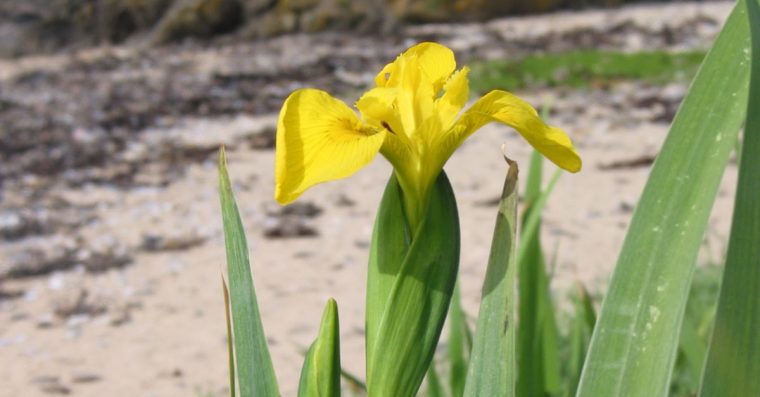Printed from: https://finalhbks.asgoodasready.com/wildflowers/yellow-flag/
Scientific name: Iris pseudacorus
Family: Iridaceae (Iris)
Yellow Flag, also known as Yellow Iris, Yellow Flag Iris, Jacob’s Sword or Segg is an iris native to the wetlands and marshes of the UK. It is also distributed throughout Europe down to the Mediterranean region and North Africa.
This Iris is common across the British Isles, with the exception of the Scottish Highlands, but is the only wild Iris in Northern Ireland.
It is easy to identify and charms us with its bright, showy, yellow flowers, which bloom from May to July. It grows up to 1.5 m tall and the flowers can reach the handsome size of 80-100 mm across, like a ‘flag’. The leaves of the Yellow Flag are long and sword-shaped and may be as much as 25mm wide.
Once the flowers have been pollinated by insects, large (7-9mm), brownish seeds begin to develop inside a capsule. This capsule splits open to release the seeds.
In ideal conditions, Yellow Flag can become quite dominant and form large, dense stands that outcompete other plants.
It grows quite happily on sunny or partly shaded sites and is known to help remove metals from the soil.
Propagation of Yellow Flag
By seed
Collect the large seeds once they have ripened and the capsule has opened. Store them in a cool, dry place until ready to sow them.
Yellow Flag seeds are dormant, so they need to be ‘awoken’ by a period of cold. This can be achieved by sowing the seeds in autumn. Sow them about 1cm deep into pots or trays of moist compost. Place the containers outdoors where they will be rained on and feel the full winter cold. They should begin to germinate in the following spring. Once large enough, they can be planted out in their final growing positions.
By division
Plants are best propagated by the division of rhizomes and potted on or planted into their permanent positions (rich, moist soil preferred). This can be done during spring and early summer.

